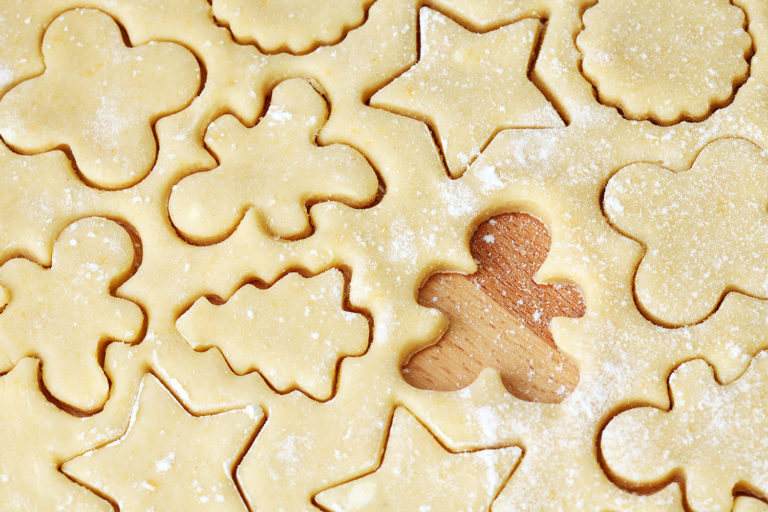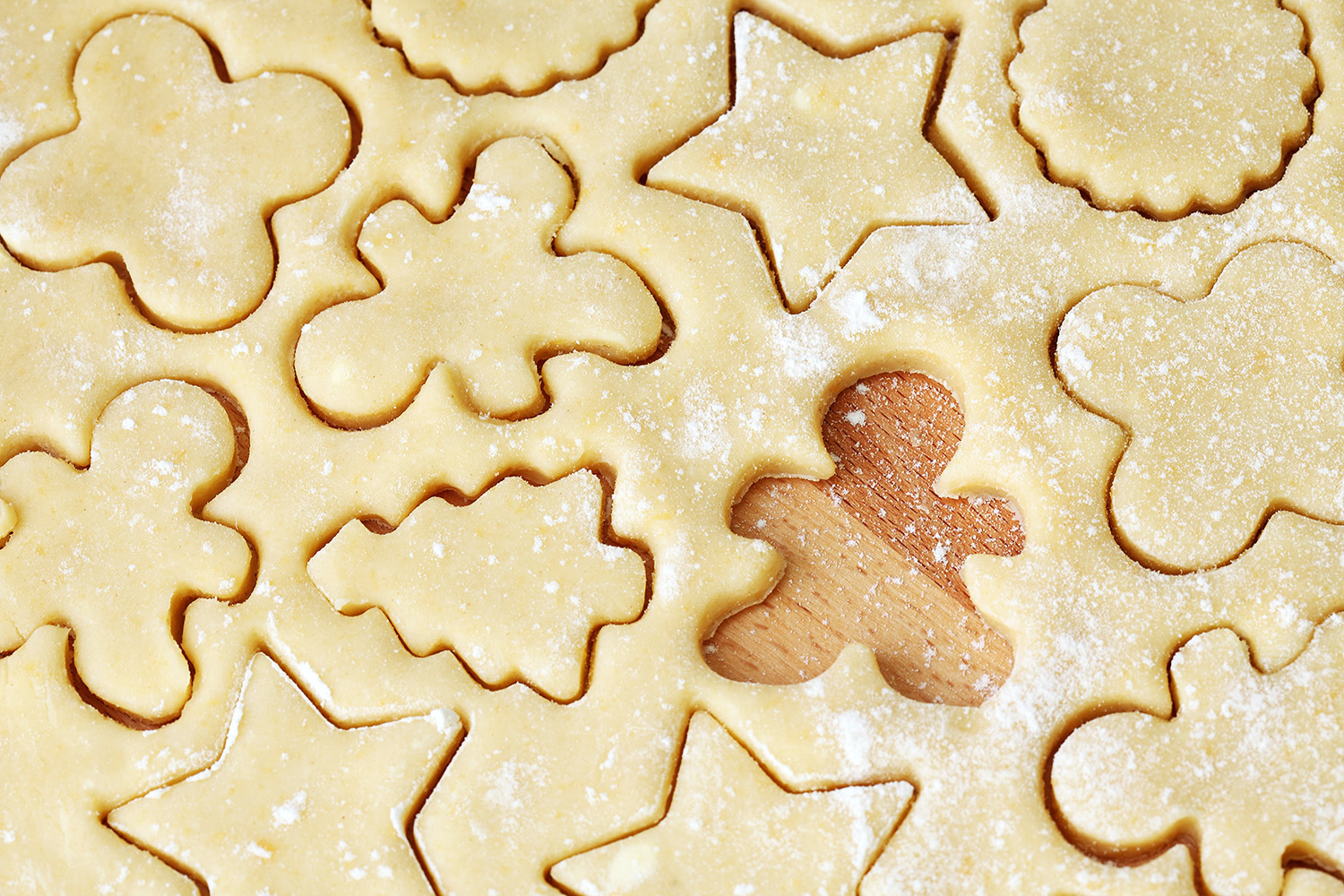The most popular cookie cutters for your cookie ideas
Preis inkl. MwSt., ggf. zzgl. Versandkosten / Letzte Aktualisierung am 2024-12-04 / Affiliate Links / Bildquelle: Amazon Product Advertising API
Tips and tricks for your shortcrust pastry
Shortcrust dough is one of the easiest doughs to make. However, there are some things you should keep in mind when processing and preparing it.
- Replace 50 g of flour with finely ground almonds. This gives your dough a particularly delicate flavor.
- Do not top your shortbread directly with wet fruit, as it will draw water and become soggy.
- Shortcrust pastry is suitable for blind baking.
- Shortcrust pastry can be frozen without any problems. It is best to use it as a thin slab so that it defrosts more quickly later.
- Refined with cinnamon, cardamom, cloves and lemon zest you get a simple basic dough for Spekulatius.
What flour is used for shortcrust pastry?
It can be made with different types of flour, but wheat flour type 405 is the most commonly used. This flour is fine and has a low gluten content, which provides the desired crumbly consistency. Alternatively, spelt flour type 630 can be used; for a gluten-free version, rice flour, buckwheat flour or a gluten-free flour blend are suitable.
What are the types of shortcrust pastry?
There are several types of shortbread, which differ mainly in the composition of ingredients. The best known are the sweet (with sugar and sometimes egg), the savory (with less sugar and more salt) and the curd-oil dough (with curd and oil instead of butter).
What is the best way to bake the dough?
Shortcrust pastry should be baked at medium heat, about 180-200°C (convection oven 160-180°C). Baking time varies depending on the thickness and size of the dough pieces, but is usually between 15 and 30 minutes. Make sure the dough is evenly golden brown and neither too dark nor too light.
How to roll out shortcrust pastry?
Before rolling out, it should be well cooled. Dust work surface and rolling pin with flour to prevent dough from sticking. Roll out the dough evenly until it reaches the desired thickness. If it is too sticky, it can be rolled out between two layers of plastic wrap or baking paper.
Where can I buy shortcrust pastry?
You can get it in most supermarkets and grocery stores in the refrigerated section. Make sure the dough is fresh and has no cracks or discoloration.
Which dough hook for shortcrust pastry?
For its preparation is recommended to use a dough hook or flat beater. These tools help to mix the ingredients evenly without overworking the dough and compromising its crumbly texture.
Which sugar to use?
For sweet shortbread, fine sugar (e.g. granulated sugar) is usually used. However, you can also use powdered sugar or brown sugar for a slightly different taste and texture. For a savory dough, the sugar content is reduced or omitted altogether.
Shortcrust pastry – what to look for?
When preparing, make sure the butter is cold and cut into small pieces before mixing it with the dry ingredients. Knead the dough just until the ingredients are well combined for the best crumbly consistency. Let the dough rest in the refrigerator for at least 30 minutes before rolling it out to make it easier to roll out and bake.
When to pre-bake the dough?
If it is used as a base for a cake or a pie with a moist filling, it should always be pre-baked. This prevents the dough base from becoming soggy and mushy. To pre-bake, prick the pastry base several times with a fork and bake at 180-200°C (convection oven 160-180°C) for about 10-15 minutes until lightly browned.
Baking shortcrust pastry – what temperature?
It should be baked ei medium heat, about 180-200°C (convection oven 160-180°C). This temperature allows for even baking and ensures that the dough becomes crisp and crumbly without drying out or burning.
What can you do with shortcrust pastry?
The dough is versatile and suitable for both sweet and savory dishes. Among the most popular uses are pies, quiches, cookies, cookies and as a base for cheesecakes or fruit tarts. The dough can also be refined with different spices, nuts or chocolate chips* to create new flavors.
Why is shortcrust pastry put under sponge cake dough?
It is often used as a base for a cookie to provide additional flavor and texture contrast. The shortbread creates a crisp, firm base that pairs well with the soft, fluffy sponge. The combination of both types of dough creates an interesting and balanced mouthfeel.
Why refrigerate shortcrust pastry?
Chilling shortbread dough before rolling and baking helps improve consistency and makes it easier to work with. Chilling makes the butter in the dough firmer, which makes the dough less sticky and easier to roll out. In addition, chilling helps to maintain the crumbly texture of the finished pastry, as the cold butter melts during baking and creates steam, which provides a crisp texture.

